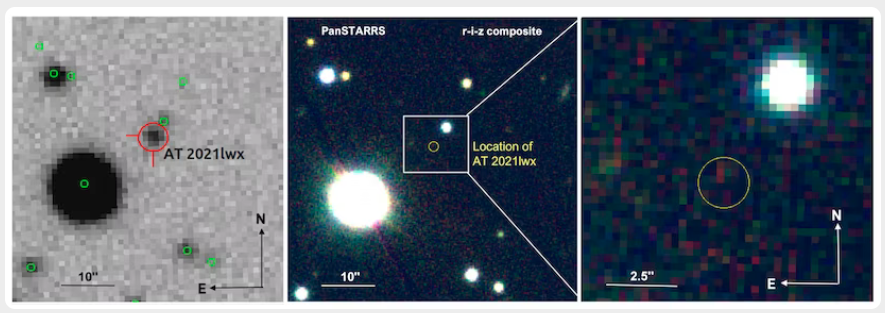A team of researchers led by Dr Philip Wiseman from the University of Southampton found the largest and longest cosmic explosion ever happened named AT2021lwx. The explosion is estimated to be ten times brighter than any other supernova so far.
AT2021lwx was first detected as a transient by the Zwicky Transient Facility imaging on 2021
April 13 and later on independently by the Asteroid Terrestrial-impact Last Alert System (ATLAS) and
by the Panoramic Survey Telescope and Rapid Response System (Pan-STARRS).

The explosion has so far lasted for more than three years, compared to most supernovae which are only visibly bright for a few months. It took place nearly 8 billion light years ago, when the Universe was around 6 billion years old, and is located in the constellation Vulpecula.
Such an extraordinary event does not fit into any common class of transient events, such as tidal disruption events or supernova explosions. Thus, the researchers collected data from telescopes observing the night sky in different wavelengths than the human eyes to understand better the nature of this source. In particular, they gathered infrared data from the Wide-field Infrared Survey Explorer (WISE) and also ultra-violet and X-ray images from the Neil Gehrels Swift Observatory. Additionally, they analysed the spectra of AT2021lwx in the optical and the near-infrared light.

They found out that this huge amount of energy is coming from a source with temperature of ~12000K and that the physical size of the explosion is about 100 times larger than the entire solar system, and at its brightest, it was about 2 trillion times brighter than our own Sun!
The most possible explanation for this event the sudden accretion of a large amount of hydrogen gas, potentially a giant molecular cloud has strayed from its orbit around a black hole and has been pulled in towards the centre of the system. The mass of this black hole was estimated to be more than 100 millions the mass of the Sun! The astronomers have already applied for follow-up observations of this source that are necessary to reveal more about the exact scenario that caused the flare.
This work was published in Monthly Notices of the Royal Astronomical Society with the title: “Multi-wavelength observations of the extraordinary accretion event AT2021lwx”. A pre-print of this paper can be found in: https://academic.oup.com/mnras/article/522/3/3992/7115325?login=true
